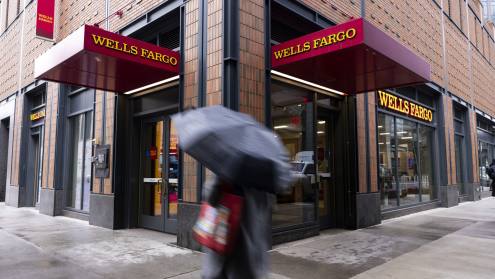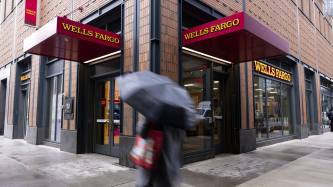At a glance
- Basel III pullbacks could improve the bottom line of investment banks
- It is hard to see if M&A activity will pick up
- A Republican victory could improve sentiment for Wall Street giants
Some US politicians have invoked the concept of America being the “indispensable nation”. That phrase could be tweaked slightly when applied to Wall Street, which could be said to have the world’s “indispensable banks”.
What they do certainly matters — as everyone discovered in the 2008 financial crisis. And while the world’s largest banks are now to be found in China, one overwhelming fact remains: Wall Street sits in the largest capital market in the world.
Last year was certainly not great for US banks in terms of fees and business activity compared to 2021. The Covid-19 pandemic was a boom time by comparison.
Dealogic’s US investment bank rankings by revenue for the full year 2023 show how firms finished from top to bottom: JPMorgan Chase, Goldman Sachs, BofA Securities, Morgan Stanley, Citi, Wells Fargo, Barclays, Jefferies, Centerview Partners and RBC Capital Markets.
There are hopes that 2024 will be different, and analysts will be closely watching Q4 2023 results from large banks for any clues.
Bank of America (BoA), JPMorgan Chase, Citi and Wells Fargo will publish their results on January 12, while Goldman Sachs and Morgan Stanley publish on 16 January.
Two good primers for what to expect from these banks, alongside Citi, over the course of the year come from recent studies published by HSBC and BoA’s global research.
The big picture
BoA and HSBC analysts think that the most advantageous and likely development for Wall Street in 2024 could be changes to the Basel III endgame rules. These were a prominent theme at the Financial Times’ and The Banker’s Global Banking Summit last November.
In a note published January 8, HSBC writes it is “incrementally positive” on US banks with moderating deposit cost pressure that should help net interest income bottom in H1 2024. And a softening of the Basel III endgame proposals could allow for more share buybacks in 2025.
Bankers have criticised Basel III as too onerous and argued they impose additional costs on direct lending and capital markets activity. Some have gone further, like Evgueni Ivantsov, chairman of the European Risk Management Council, who wrote that capital buffers have diminishing returns above a certain level.
According to BoA research notes published on January 4, there is a real chance there will be meaningful changes to the proposed policies. It points out that the lack of consensus at the Federal Reserve, pushback in Congress and upcoming US presidential elections should incentivise regulators to soften the rules.
“In our view, the current proposal doesn’t fully account for risks that could be created by reduced profitability and lending moving outside of the regulated banking entities,” it says.
BoA thinks the outcome of the November election could help drive an increase in share buybacks, put a floor under bank stock and help create a more favourable climate for mergers and acquisitions.
On the other hand, there are features of the macro picture that are less positive: uncertainty arising from geopolitics and possible rate cuts.
Whether private credit will disintermediate banks is another story that is still unfolding. Certain banks are exploring a partnership model where private debt combines with the origination capabilities of the banks.
This is done in a way that loans are not carried on the bank balance sheet, but banks continue to manage the client relationship, including providing additional banking services such as treasury management, deposits, and FX.
“We note that while this sounds good on paper, [it is] early days yet to conclude whether private debt and banks can enjoy a symbiotic relationship on a lasting basis given competing priorities,” BoA says.
It also points out that larger banks are better positioned to compete in the space via their asset management branches that compete against alternative asset managers in fund-raising activity.
Here, it is more likely that banks offload non-core lending portfolios such as indirect consumer loans instead of getting outgunned on middle market lending to businesses that require a full suite of banking services.
BoA cites numbers that evidence how much US investment banks have been undercut by private credit firms. Market capitalisation of the five largest alternative asset managers has grown by +500% to $360bn over the last five years vs growth of +22% to $1300bn for the five largest US banks. This highlights the shifting power dynamics on Wall Street in the aftermath of the financial crisis and the Dodd Frank rules. So, how will the large US banks fare in 2024?
Regaining focus
Goldman Sachs and Citi are going through a period of transition as both aim to refocus their services on core propositions. According to BoA research, chief executive David Solomon appears to have “weathered the storm” at Goldman Sachs during the past couple of years.
That came from a slump in investment banking, an underperforming consumer business and asset write downs. Mr Solomon’s decision to pull back from the consumer pivot and double down on the bank’s traditional strength — capital markets — means that the bulk of revenues are dependent on investment banking and trading. Other parts of the franchise such as Goldman Sachs’ asset management division and private bank remain an afterthought when considered by the market overall.
HSBC says that it remains positive on Goldman Sachs as improved investment banking revenue and the reconfiguration of the asset management business should drive profitability expansion in the coming years. Also, any recovery in capital markets should be favourable for Goldman Sachs.
Citi, under the leadership of Jane Fraser, is seen as the most compelling risk/reward in the large-cap banks space. BoA outlines three drivers that should help underpin Citi’s performance this year: a potential increase in share buybacks during the second half of the 2024; watered down Basel III reforms proposals that should support management to achieve profitability targets; and the likelihood of a soft landing for the US economy.
It adds that changes instituted by Ms Fraser, such as streamlining the bank’s structure, exiting lower return businesses and external hires, are a significant departure from anything “attempted under prior CEOs over the last two decades”.
HSBC is also bullish on Citi, upgrading it from ‘hold’ to ‘buy’, and says that it will disproportionately benefit from any watering down of the Basel III rules. That is because it would face a capital shortfall under current proposals but would be able to do more share buybacks if the rules are softer.
The leaders
BoA sees Wells Fargo, Morgan Stanley and JPMorgan Chase as being in the strongest position strategy-wise.
It is a big year for Morgan Stanley, where the new leadership of CEO Ted Pick will determine how the bank’s year unfolds. Mr Pick took over from James Gorman last October, and analysts are looking to see if there will be any changes in the firm’s objectives.
BoA highlights that its business model “is relatively nascent” and needs to “prove its resilience” over the long term. It says that Mr Gorman has recently talked about Morgan Stanley’s desire to expand the bank’s wealth management proposition outside the US through mergers and acquisitions, combined with organic growth.
“We expect to see some action on this front as Morgan Stanley goes head-to-head with the likes of UBS, Julius Baer, and HSBC to tap into the rapidly growing wealth management wallet, especially in Asia (Middle East, India, Japan),” BoA says.
HSBC observes that Morgan Stanley is also well positioned to benefit from a reduction in Basel III compliance. It points out that risk-weighted assets could increase by around 40% under the implementation of the current regime — more than any other bank.
Regarding Wells Fargo, BoA flags its “significant progress” under the current leadership to not only address past regulatory issues but also make investments to grow market share in various sectors. These include wealth, cards, capital markets and digital banking.
The most important trigger for the bank to surge upwards is the removal of the asset cap imposed by the Federal Reserve back in 2018. This was done in response to a fake accounts scandal in 2016 that saw the bank create bogus customer accounts to help meet aggressive sale targets.
The removal of the cap could happen before the end of 2025, but not this year given the US election.
HSBC continues to have a ‘buy’ rating for BoA due to credit and cost discipline, falling risks from deposit cost pressure, and a comparatively attractive valuation.
JPMorgan Chase is seen as the frontrunner among the US investment banks with the only wildcard factor being when chairman and CEO Jamie Dimon chooses to step down.
With the investment bank results to be published over the following week, it will be fascinating to see how the year plays out for Wall Street.










